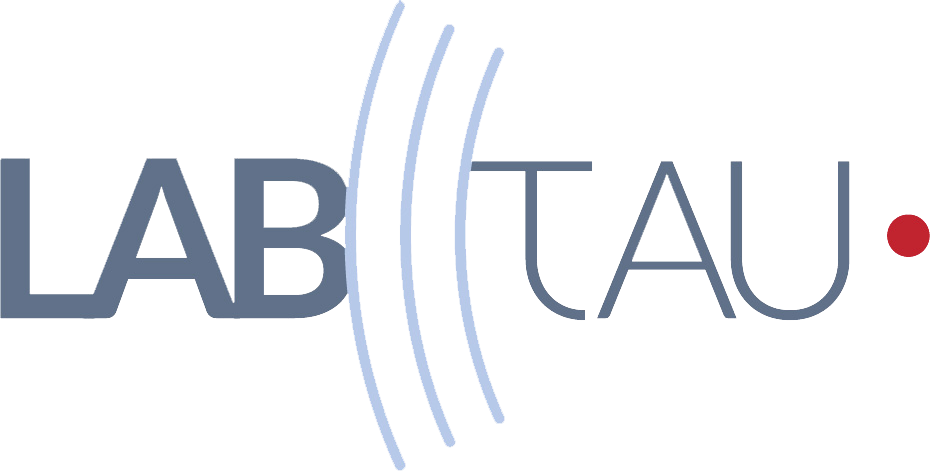Thesis by DUPENLOUP Florence
Utilization of coded signals in ultrasound therapy with high-intensity focused ultrasound (HIFU): application to dynamic focusing
Defended on 1 october 1996
The purpose of this study is to establish dynamic focusing as a viable technique in the field of ultrasonic surgery with high-intensity focused ultrasound (HIFU). After a description of ultrasonic surgery and dynamic focusing, the transducer is described. Our choice for the transducer is an annular array, which allows dynamic focusing along its acoustic axis. Part of the work is theoretical and consists of studying the feasibility of the proposed technique in linear media. This approach shows first and foremost that dynamic focusing generates grating lobes, which create undesirable effects and impose a limit on the application. Secondly, the approach highlights the fact that the use of a broadband signal of excitation, instead of the usual single-frequency signal, makes it possible to push back this limit. An apparatus is then built to control the annular array, making it possible to generate at will a monochromatic or pseudo-random coded signal, chosen as a broadband signal. Experiments are then undertaken, in linear and non-linear media, to confirm the interest of the broadband signal. Lastly, a final in vitro experiment proves it is possible to destroy tissues through dynamic focusing with a pseudo-random signal.
Utilisation de signaux codés en thérapie ultrasonore par ultrasons focalisés de haute intensité. Application à la focalisation dynamique
Soutenue le 1 October 1996
Le but de l'étude est d'implanter la focalisation dynamique dans le domaine de la chirurgie ultrasonore par ultrasons focalisés de haute intensité (HIFU). Après une description de la chirurgie ultrasonore et de la focalisation dynamique, nous définissons le transducteur utilisé. Notre choix s'est porté sur un réseau annulaire qui permet une focalisation dynamique le long de son axe acoustique. Une partie du travail est théorique et consiste à étudier la faisabilité de la technique proposée, en milieu linéaire. Cette approche montre premièrement que la focalisation dynamique engendre des lobes de réseau qui, responsables de dommages indésirables, imposent une limite d'application. Deuxièmement, elle met en évidence le fait que l'utilisation d'un signal d'excitation large bande, au lieu du signal monochromatique usuel, permet de repousser cette limite. Un appareillage a alors été construit pour piloter le réseau annulaire décrit précédemment. Il permet de générer au choix un signal monochromatique ou pseudo-aléatoire codé, choisi comme signal large bande. Des expériences sont ensuite menées dans des milieux linéaires et non-linéaires qui confirment l'intérêt du signal large bande. Enfin, une dernière expérience in vitro prouve qu'il est possible de détruire des tissus par focalisation dynamique associée à un signal pseudo-aléatoire.
Defended on 1 october 1996
The purpose of this study is to establish dynamic focusing as a viable technique in the field of ultrasonic surgery with high-intensity focused ultrasound (HIFU). After a description of ultrasonic surgery and dynamic focusing, the transducer is described. Our choice for the transducer is an annular array, which allows dynamic focusing along its acoustic axis. Part of the work is theoretical and consists of studying the feasibility of the proposed technique in linear media. This approach shows first and foremost that dynamic focusing generates grating lobes, which create undesirable effects and impose a limit on the application. Secondly, the approach highlights the fact that the use of a broadband signal of excitation, instead of the usual single-frequency signal, makes it possible to push back this limit. An apparatus is then built to control the annular array, making it possible to generate at will a monochromatic or pseudo-random coded signal, chosen as a broadband signal. Experiments are then undertaken, in linear and non-linear media, to confirm the interest of the broadband signal. Lastly, a final in vitro experiment proves it is possible to destroy tissues through dynamic focusing with a pseudo-random signal.
Utilisation de signaux codés en thérapie ultrasonore par ultrasons focalisés de haute intensité. Application à la focalisation dynamique
Soutenue le 1 October 1996
Le but de l'étude est d'implanter la focalisation dynamique dans le domaine de la chirurgie ultrasonore par ultrasons focalisés de haute intensité (HIFU). Après une description de la chirurgie ultrasonore et de la focalisation dynamique, nous définissons le transducteur utilisé. Notre choix s'est porté sur un réseau annulaire qui permet une focalisation dynamique le long de son axe acoustique. Une partie du travail est théorique et consiste à étudier la faisabilité de la technique proposée, en milieu linéaire. Cette approche montre premièrement que la focalisation dynamique engendre des lobes de réseau qui, responsables de dommages indésirables, imposent une limite d'application. Deuxièmement, elle met en évidence le fait que l'utilisation d'un signal d'excitation large bande, au lieu du signal monochromatique usuel, permet de repousser cette limite. Un appareillage a alors été construit pour piloter le réseau annulaire décrit précédemment. Il permet de générer au choix un signal monochromatique ou pseudo-aléatoire codé, choisi comme signal large bande. Des expériences sont ensuite menées dans des milieux linéaires et non-linéaires qui confirment l'intérêt du signal large bande. Enfin, une dernière expérience in vitro prouve qu'il est possible de détruire des tissus par focalisation dynamique associée à un signal pseudo-aléatoire.




